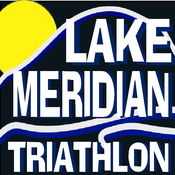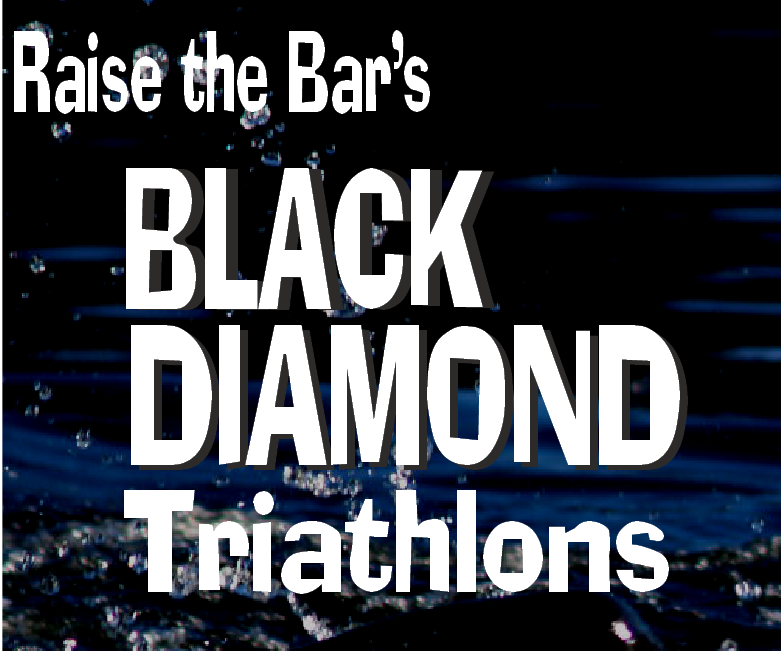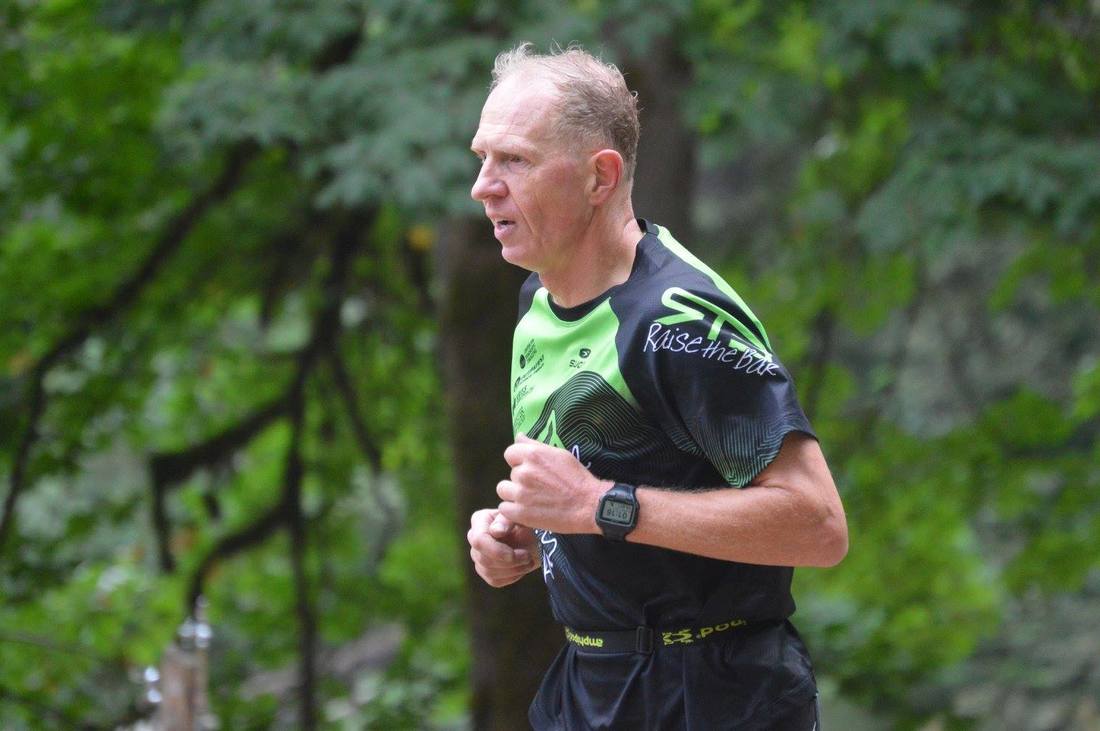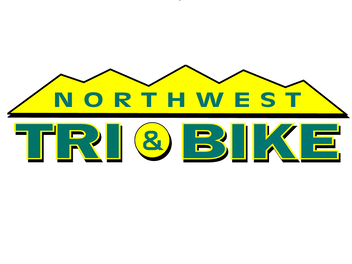 By Holly Pennington PT, DPT/Outpatient Physical Therapy You can’t be in the world of triathlons long before you hear about the various effects cycling can have on the male pelvic floor: testicular pain, infertility, genital numbness to name a few. But what about females? There is less information out there about cycling and the female pelvic floor because women have not been studied as much, not because we are less prone to such problems. Prolonged stress in the pelvic region, whether it comes in the form of sustained pressure (cycling) or impact (running), affects the muscles that support our bladder and other vital organs. First, let’s give these important muscles a definition they deserve - they are much more than our “Kegel” muscles. The pelvic floor is the layer of muscles that stretch front to back between the pubic bone and tailbone, and side to side between the sitting bones. In the healthy state, these muscles are firm and thick. They function to support the bowel, bladder and uterus as well as allow for passage of urine and feces. When pelvic floor muscles become stretched out or weakened – a common effect of pregnancy, childbirth and certain types of exercise – women often experience incontinence, pelvic pain, or pelvic organ prolapse. In a recent study of 311 female triathletes, 1 in 3 women reported symptoms of pelvic floor disorders. Stress urinary incontinence (urinary leakage with physical activity), fecal incontinence and pelvic girdle pain were the most common conditions. Researchers have also demonstrated decreased pelvic region sensation in cyclists compared to runners who did not cycle. While the specific effect of cycling on the female pelvic floor is not well understood, there are steps you can take to protect these important muscles. Start with your saddle. It’s an obvious, but not easy, place to start. A 2016 clinical study concluded that wider, traditional shaped saddles cause less pressure in the female pelvic area than cut-out saddles. This is something to keep in mind when you shop for the perfect bike seat. However, your comfort and preference matter more than research studies, magazine articles or expert advice. And, the saddle is just one of many links between cycling and pelvic floor problems. Don’t stop with your saddle. What happens above and below the seat could be just as important as the shape and size of your saddle. Research shows that handlebars positioned below seat height are associated with increased numbness in the pelvic floor compared to handlebars at or above seat height. Just like every part on your bike influences how well it works, every part of your body affects the others. Spend the time and money on a professional bike fit – your whole body will thank you! Understand what is normal. “Leaking is common, but it is not normal. If you do notice some urinary leakage during exercise, increased urgency or frequency, pain or pressure in the pelvic region, it’s time to seek help,” advises Alexis Smith, PT, DPT and women’s health specialist at Outpatient Physical Therapy in Kent Easthill. As many as half of elite athletes experience urine loss during physical activity, but only very few - 3.3% - discuss it with their healthcare providers. Women’s health physical therapists like Alexis specialize in the rehabilitation of the pelvic floor muscles, utilizing equipment such as biofeedback and electrical stimulation to resolve symptoms of incontinence, pain and prolapse. If you are a female triathlete experiencing pelvic floor symptoms, you are not alone. You can take charge of your bike and your body. And professionals like Alexis are out there eager to help you move from “common” to “normal.” References: Johnny Yi, Sandi Tenfelde, Dina Tell, Cynthia Brincat, Colleen Fitzgerald. Triathlete Risk of Pelvic Floor Disorders, Pelvic Girdle Pain, and Female Athlete Triad. Female Pelvic Medicine & Reconstructive Surgery (2016). Thyssen, H., Clevin, L., Olesen, S. et al. Urinary Incontinence in Elite Female Athletes and Dancers, Int Urogynecol J (2002) 13: 15. Connell, K., & Guess, M. Genital sensation and sexual function in women bicyclists and runners: are your feet safer than your seat? Journal of Sexual Medicine, (2016) 3:6, 1018-1027. Join Outpatient Physical Therapy for a FREE Ladies Night
THURSDAY JULY 27 OPEN HOUSE 6-8 PM Presentations@ 6:30 Q&A@ 7:00 Kent Easthill Clinic 13106 SE 240th ST, STE 103 Kent, WA 98031
2 Comments
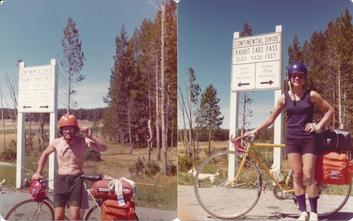 We’ve known each other since high school, been together since college, and been married now for 40 years. We’ve strived to stay active over the years. For Mike, there was PeeWee baseball and football, high school wrestling, college intramurals, and adult soccer. For Kris, a generally active life-style including some criterion racing in college (for those who might remember, Eddy Merckx was the big name in international cycling way back then). As a couple, we’ve done multi-day bicycle road trips, climbed numerous 14ers/near-14ers (including Rainier), completed the Wonderland Trail, X-country skied, run various venues including Sound-to-Narrows, and eventually we found our way to triathlon. 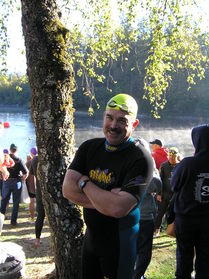 From Mike: I attempted my first triathlon (AA Sports’ Black Diamond Sprint) in 2005 at the age of 53, mostly just for fun. I broke out my shorty wetsuit by Stearns, dusted off my $200 road bike, and sort of trained for a whole month (the closest I got to open water was the swim beach at Lake Meridian). At that time, my freestyle was only good for +/- 50 yards, so I planned to swim breaststroke for the most part. I had a simple race plan—start at the back, let everybody else lead the way, and just finish at my own (easy) pace. A couple of things disrupted that plan. First, I chose not to enter the water prior to the start—that stuff’s cold, right? And second, as soon as my wave took off, I was hit by this uncontrollable urge to “KEEP UP!” and immediately gave chase. The result (cold water shock, followed by a short burst of anaerobic freestyle) left me completely out of breath and emotionally overwhelmed just seconds into the swim. I somehow made my way to shore, sat awhile and tried to think of a good way to just collect my gear and go home. Couldn’t come up with one, so did the only other thing I could—reinstituted my race plan, got back in the water and finished the race. What was supposed to be a one-time, “bucket list”-type thing became a challenge to do it again the next year, only with better preparation. It was almost 4 years before I raced again. While training for the 2006 reprise race, I had a serious crash on my bike and spent a week in Harborview. I eventually recovered physically, but had lost my mental mojo. It took a challenge from an older brother in 2009 to get me back in the saddle and into triathlon again. That was the year I found and joined RTB, got a little more serious about training and equipment, and I’ve been tri-ing ever since. 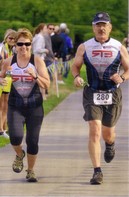 When I think about why I still tri, it mostly boils down to that word “challenge”. I’m not particularly talented athletically, and so am constantly looking for ways to improve my freestyle (bike, run) technique, to be faster, stronger and/or more efficient. In addition, I’m starting to do longer distances than my usual sprint. I did my first Olympic distance (Meridian) just last year, and will repeat that this year, followed by my first 70.3 at Black Diamond to end the season. An added challenge is to do all this while dealing with a body that just isn’t as resilient as it used to be. Besides the challenge aspect, the other big reason I still tri is Kris (together, we are Team SchroMotion). Without her ability and willingness to train with me this whole triathlon thing would be lots harder. 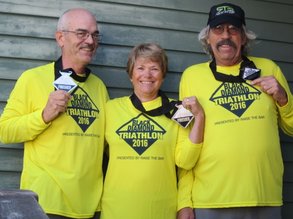 From Kris: I bought my first pair of running shoes in high school… back then there were no running shoes for girls/women (yes, I guess that makes me old) … and since I have relatively small feet, I ended up with little boys’ size 4 1/2 Adidas. Thankfully, much has changed! I don’t really consider myself an athlete… I'm not competitive by nature… more goal-oriented with a love of muscle-powered sports (except maybe swimming). I came late to this party known as triathlon and I’m so happy I did! I joined RTB one year after Mike did… he seemed to be having so much fun!! I don’t race that often… am more drawn to the training (goals!) and to relays (fun with friends!) and to volunteering (all the excitement with minimal training commitment!). My biggest challenge with multisport was overcoming my fear and actually putting my face in the water while learning to swim (still working on it!). I’m inspired by all the RTB members… and especially by Mike… he continues to strive for improvement and he keeps me moving even when I’d rather not. 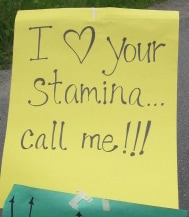 In closing, we’d like to just mention how much we appreciate the support and encouragement that comes with RTB membership. They’ve got your back, whether it’s related to multisport, or just life in general. We know this from personal experience. The attitude that permeates from the top, on down through the ranks, is basically, “You got this!”. Thanks RTB! |
Raise the BarRace reports, upcoming events, news, and more, from RTB. Archives
September 2023
|
 RSS Feed
RSS Feed
